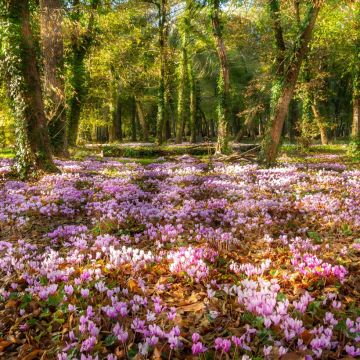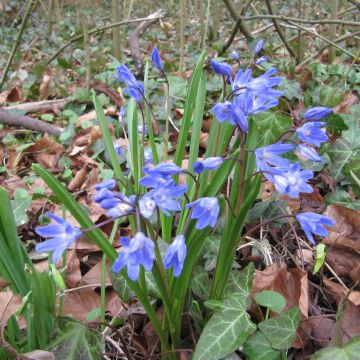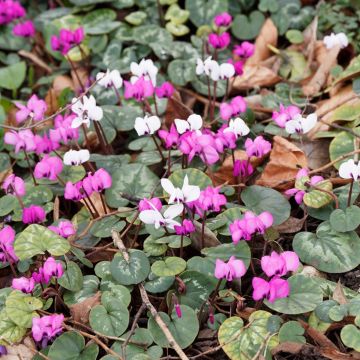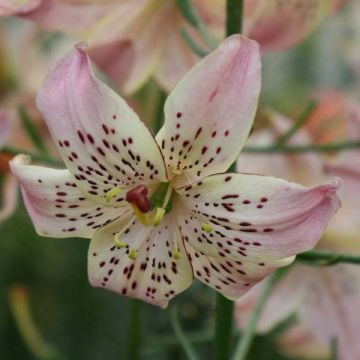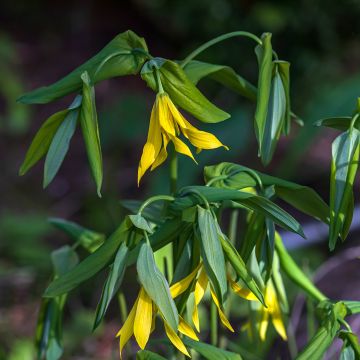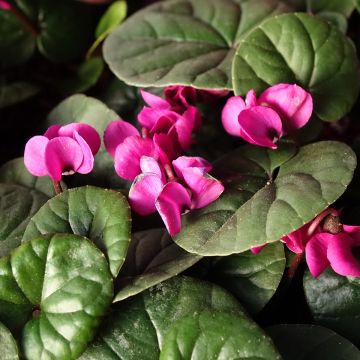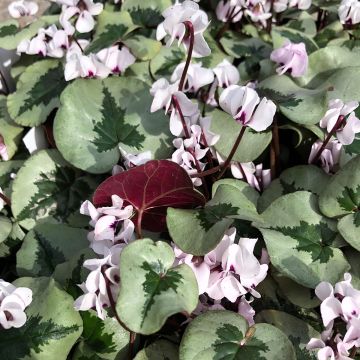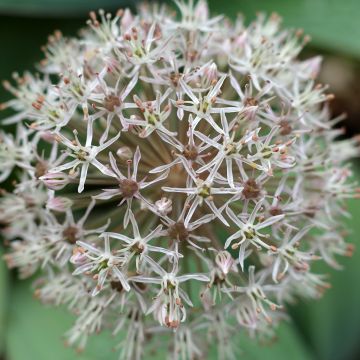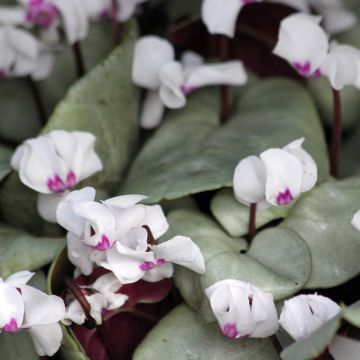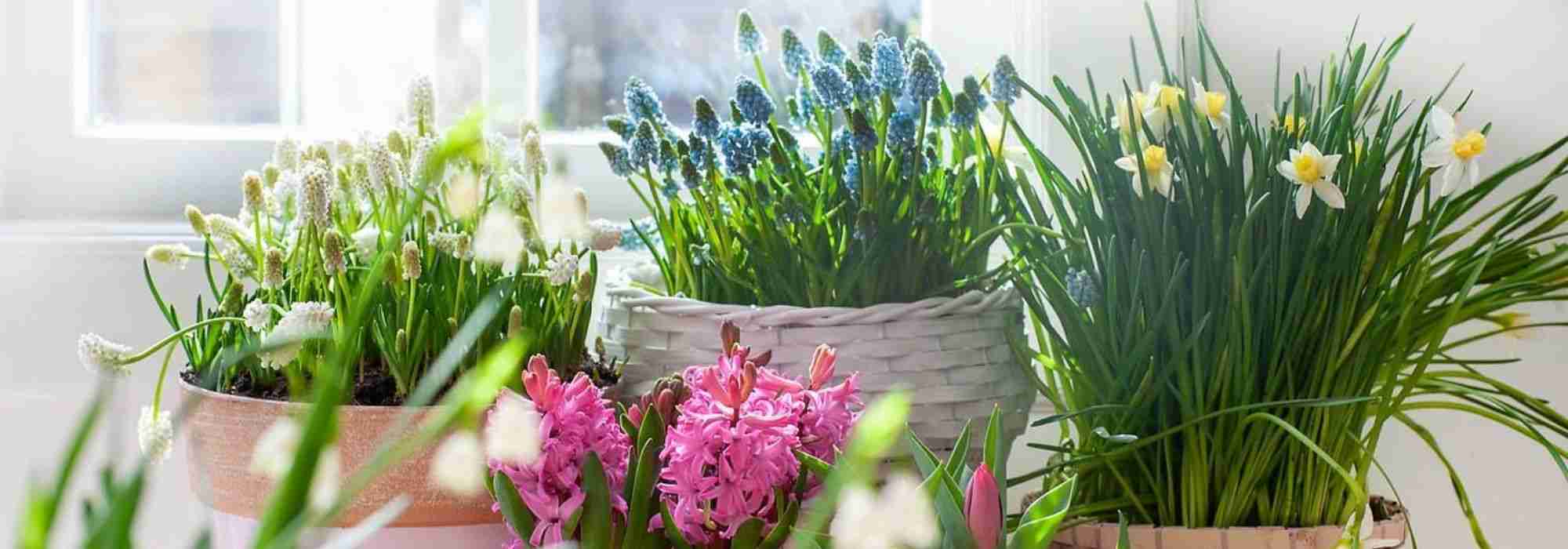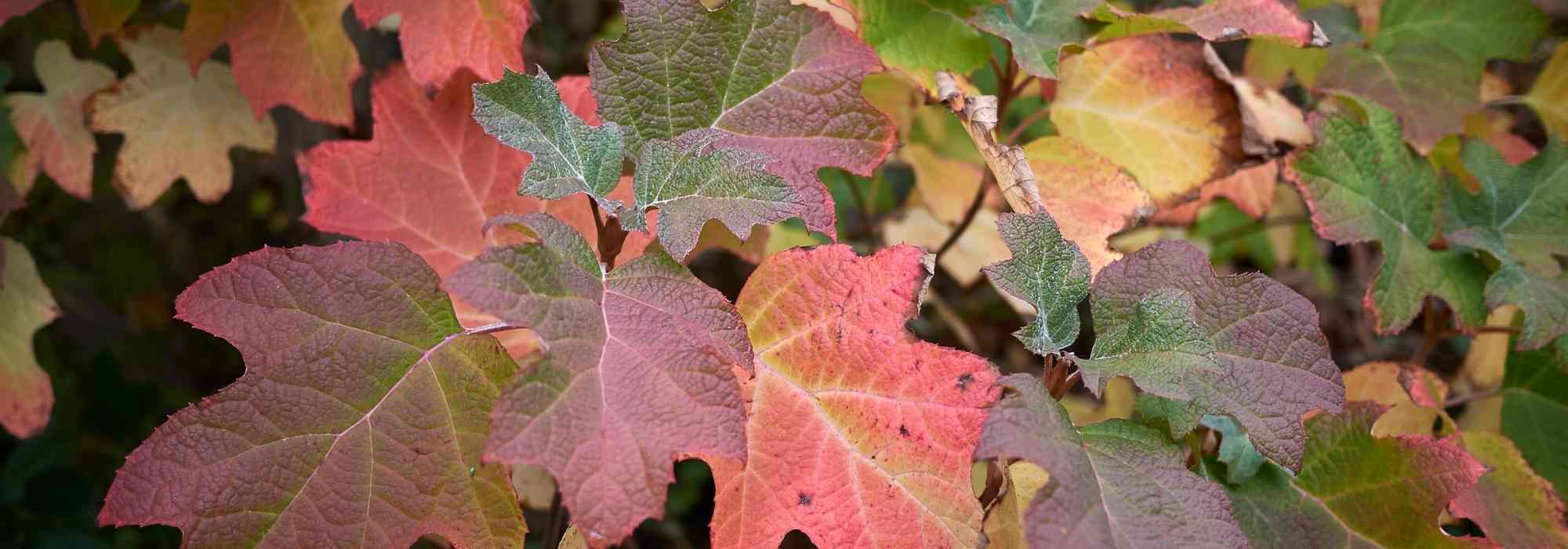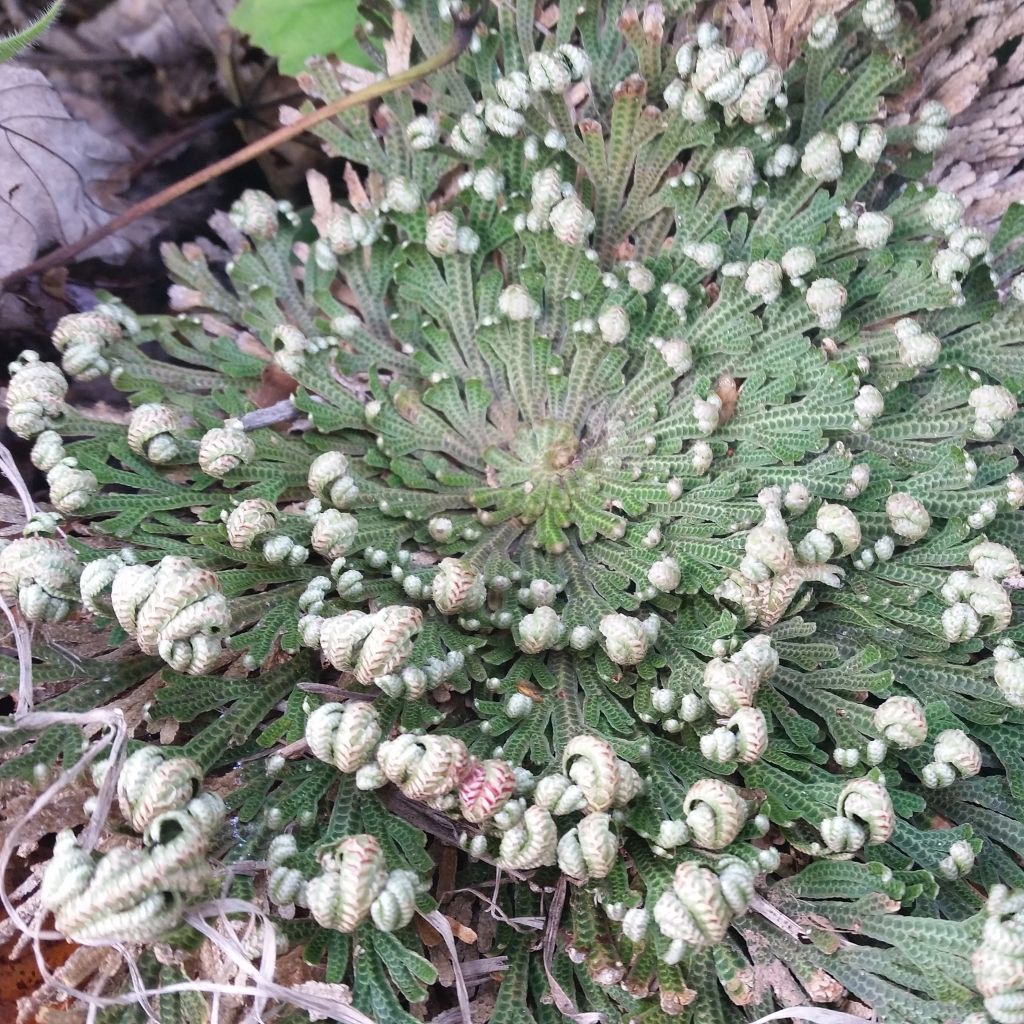

Rose de Jericho - Selaginella lepidophylla
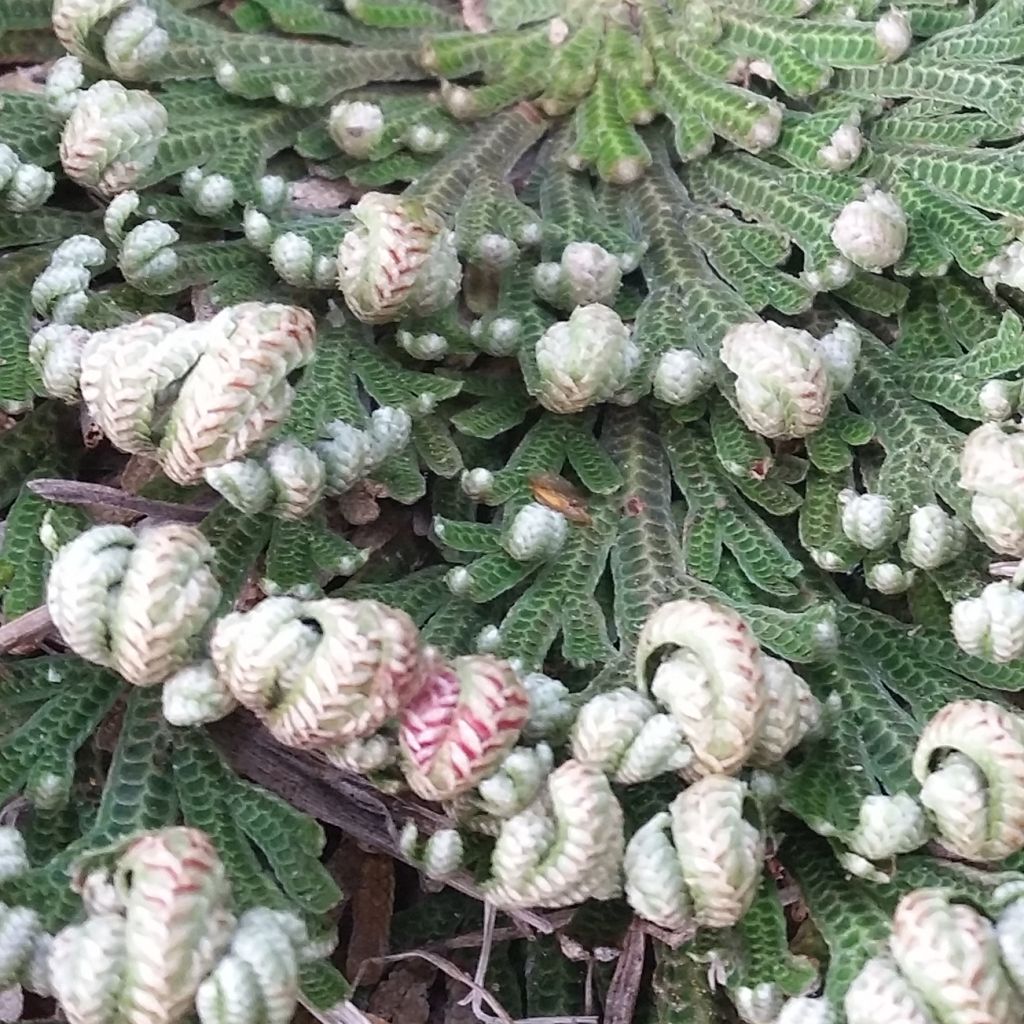

Rose de Jericho - Selaginella lepidophylla
Selaginella lepidophylla
Selaginella lepidophylla
Rose of Jericho, Resurrection Plant, Flower of Stone
Even though mine remains brown, it has this reflex to unfurl when it has water. Then, it curls back up and hey presto, water, and it blossoms again. But I dare not leave it with water constantly for fear of rot.
Nadine C., 30/04/2017
Special offer!
Receive a €20 voucher for any order over €90 (excluding delivery costs, credit notes, and plastic-free options)!
1- Add your favorite plants to your cart.
2- Once you have reached €90, confirm your order (you can even choose the delivery date!).
3- As soon as your order is shipped, you will receive an email containing your voucher code, valid for 3 months (90 days).
Your voucher is unique and can only be used once, for any order with a minimum value of €20, excluding delivery costs.
Can be combined with other current offers, non-divisible and non-refundable.
Home or relay delivery (depending on size and destination)
Schedule delivery date,
and select date in basket
This plant carries a 12 months recovery warranty
More information
We guarantee the quality of our plants for a full growing cycle, and will replace at our expense any plant that fails to recover under normal climatic and planting conditions.
Does this plant fit my garden?
Set up your Plantfit profile →
Description
At first glance, this Jericho Rose, which is named Selaginella lepidophylla, forms a ball of dry, brownish leaves that seems lifeless. It unfurls when it comes into contact with water, gradually regaining life and colour, offering a beautiful tiered rosette with finely imbricated and dissected leaves, evoking both fern fronds and chervil. This 'rose' is actually a plant without flowers or seeds, related to ferns, seemingly living off the air. It is a curiosity of nature, to be contemplated up close, but also a perfect example of adaptation to desert environments. Capricious and sometimes perplexing, it is cultivated in acidic, very light soil that does not retain water and protected from frost. It will bring joy to both adults and children.
Sometimes called the Resurrection Plant or Rock Flower, this 'archaic' perennial plant belongs to the family Selaginellaceae, a genus belonging to the division of pteridophytes, also known as ferns. These are fossil plants, constituting the first terrestrial plant civilization, appearing 400 million years ago. Selaginella lepidophylla is native to the Chihuahuan Desert, which is located on the border between southern United States and northern Mexico.
During its vegetative period, in humid environments, it presents itself as an open, spreading rosette, consisting of evergreen light green leaves in the center, darker on the periphery, remarkably dissected and branched into denticulate leaves, resembling imbricate scales. When drought occurs, the plant goes into a dormant state, losing up to 97% of its mass, withdrawing all sap from its foliage. It gradually curls up to form a dry, brownish ball. This plant reproduces through spores, like ferns. The spores are quickly emitted during the vegetative period and germinate just as quickly in a humid environment to form new plants. It is worth noting that a dead plant, if it does not turn green again when in contact with water, will retain its mechanical properties that allow it to flourish and close up into a ball.
Welcome the Jericho Rose into your home, in a pot or on a saucer filled with water to admire the spectacle of its resurrection. It is a constantly renewed pleasure. According to certain beliefs, a neighboring plant named Anastatica hierochuntica or original Jericho rose brings good luck to those who protect it, from generation to generation.
Report an error about the product description
Selaginella lepidophylla in pictures
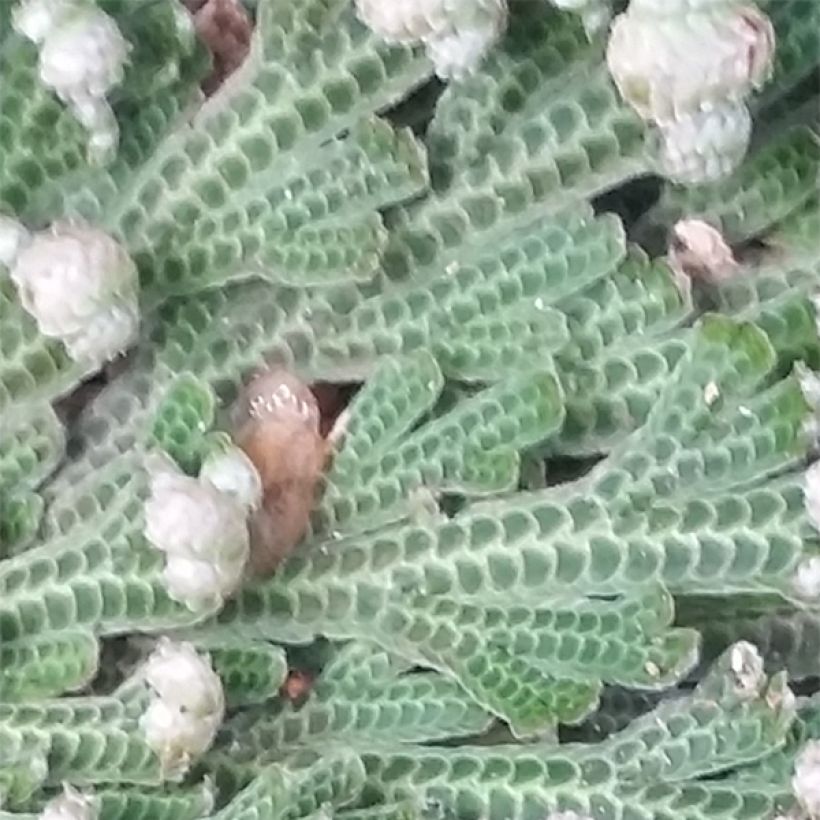

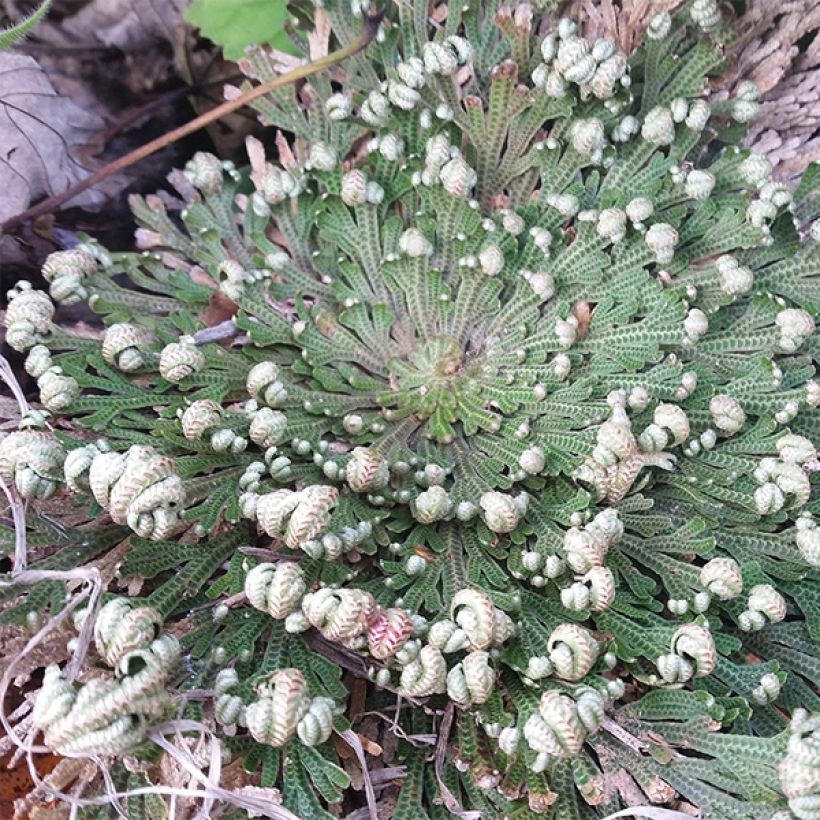

Flowering
Foliage
Plant habit
Botanical data
Selaginella
lepidophylla
Sellaginellaceae
Rose of Jericho, Resurrection Plant, Flower of Stone
North America
Other Spring bulbs A to Z
View all →Planting and care
To cultivate this Rose of Jericho, one must observe its natural living conditions. The Chihuahua desert is a high-altitude desert, with the majority of its surface located between 1000 and 1500 meters (3281 and 4921 feet). The soil there is sandy, rocky, and highly draining. The annual rainfall is very low, with most of the rain falling during the summer. This plant generally grows on rocks or on dry soil. Unlike cacti, its neighbours, it cannot store water, so the plant folds its stems to conserve the little moisture it contains in its core.
It can be cultivated in two different ways.
1 - 'Above-ground' method:
Simply place your dried-out plant on a saucer filled with fresh (or low in limestone) water. Within a few minutes, it will come back to life and flourish. Leave it in the saucer for a few days, changing the water. Then, it needs a period of rest, which can last from one to several months, without water. Do not expose it to direct sunlight. Be careful not to damage the roots with a too long period of drought.
2- Pot cultivation:
The Selaginella lepidophylla can live in a pot, placed in a bright location without direct sunlight exposure. Use an acidic and well-draining mixture of heather soil, sand, and pumice. It is neither an aquatic plant nor an epiphytic plant; it is unable to survive long without soil.
Planting period
Intended location
Care
Planting & care advice
-
, onOrder confirmed
Reply from on Promesse de fleurs
Haven't found what you were looking for?
Hardiness is the lowest winter temperature a plant can endure without suffering serious damage or even dying. However, hardiness is affected by location (a sheltered area, such as a patio), protection (winter cover) and soil type (hardiness is improved by well-drained soil).

Photo Sharing Terms & Conditions
In order to encourage gardeners to interact and share their experiences, Promesse de fleurs offers various media enabling content to be uploaded onto its Site - in particular via the ‘Photo sharing’ module.
The User agrees to refrain from:
- Posting any content that is illegal, prejudicial, insulting, racist, inciteful to hatred, revisionist, contrary to public decency, that infringes on privacy or on the privacy rights of third parties, in particular the publicity rights of persons and goods, intellectual property rights, or the right to privacy.
- Submitting content on behalf of a third party;
- Impersonate the identity of a third party and/or publish any personal information about a third party;
In general, the User undertakes to refrain from any unethical behaviour.
All Content (in particular text, comments, files, images, photos, videos, creative works, etc.), which may be subject to property or intellectual property rights, image or other private rights, shall remain the property of the User, subject to the limited rights granted by the terms of the licence granted by Promesse de fleurs as stated below. Users are at liberty to publish or not to publish such Content on the Site, notably via the ‘Photo Sharing’ facility, and accept that this Content shall be made public and freely accessible, notably on the Internet.
Users further acknowledge, undertake to have ,and guarantee that they hold all necessary rights and permissions to publish such material on the Site, in particular with regard to the legislation in force pertaining to any privacy, property, intellectual property, image, or contractual rights, or rights of any other nature. By publishing such Content on the Site, Users acknowledge accepting full liability as publishers of the Content within the meaning of the law, and grant Promesse de fleurs, free of charge, an inclusive, worldwide licence for the said Content for the entire duration of its publication, including all reproduction, representation, up/downloading, displaying, performing, transmission, and storage rights.
Users also grant permission for their name to be linked to the Content and accept that this link may not always be made available.
By engaging in posting material, Users consent to their Content becoming automatically accessible on the Internet, in particular on other sites and/or blogs and/or web pages of the Promesse de fleurs site, including in particular social pages and the Promesse de fleurs catalogue.
Users may secure the removal of entrusted content free of charge by issuing a simple request via our contact form.
The flowering period indicated on our website applies to countries and regions located in USDA zone 8 (France, the United Kingdom, Ireland, the Netherlands, etc.)
It will vary according to where you live:
- In zones 9 to 10 (Italy, Spain, Greece, etc.), flowering will occur about 2 to 4 weeks earlier.
- In zones 6 to 7 (Germany, Poland, Slovenia, and lower mountainous regions), flowering will be delayed by 2 to 3 weeks.
- In zone 5 (Central Europe, Scandinavia), blooming will be delayed by 3 to 5 weeks.
In temperate climates, pruning of spring-flowering shrubs (forsythia, spireas, etc.) should be done just after flowering.
Pruning of summer-flowering shrubs (Indian Lilac, Perovskia, etc.) can be done in winter or spring.
In cold regions as well as with frost-sensitive plants, avoid pruning too early when severe frosts may still occur.
The planting period indicated on our website applies to countries and regions located in USDA zone 8 (France, United Kingdom, Ireland, Netherlands).
It will vary according to where you live:
- In Mediterranean zones (Marseille, Madrid, Milan, etc.), autumn and winter are the best planting periods.
- In continental zones (Strasbourg, Munich, Vienna, etc.), delay planting by 2 to 3 weeks in spring and bring it forward by 2 to 4 weeks in autumn.
- In mountainous regions (the Alps, Pyrenees, Carpathians, etc.), it is best to plant in late spring (May-June) or late summer (August-September).
The harvesting period indicated on our website applies to countries and regions in USDA zone 8 (France, England, Ireland, the Netherlands).
In colder areas (Scandinavia, Poland, Austria...) fruit and vegetable harvests are likely to be delayed by 3-4 weeks.
In warmer areas (Italy, Spain, Greece, etc.), harvesting will probably take place earlier, depending on weather conditions.
The sowing periods indicated on our website apply to countries and regions within USDA Zone 8 (France, UK, Ireland, Netherlands).
In colder areas (Scandinavia, Poland, Austria...), delay any outdoor sowing by 3-4 weeks, or sow under glass.
In warmer climes (Italy, Spain, Greece, etc.), bring outdoor sowing forward by a few weeks.






























